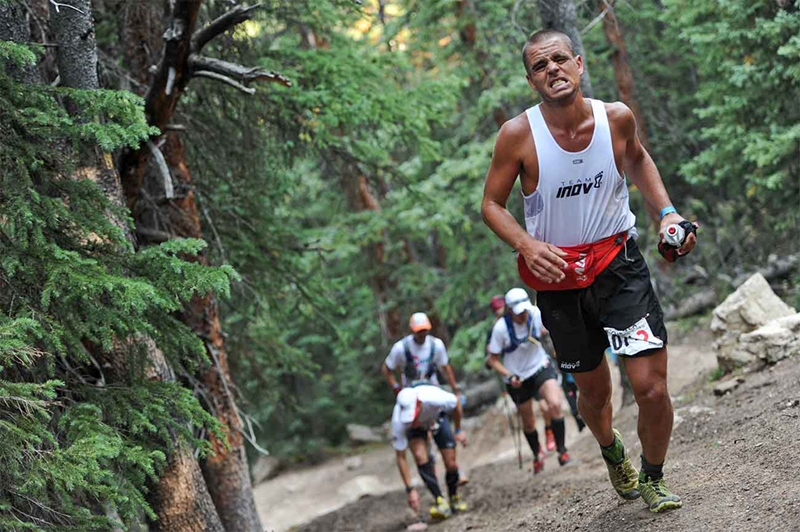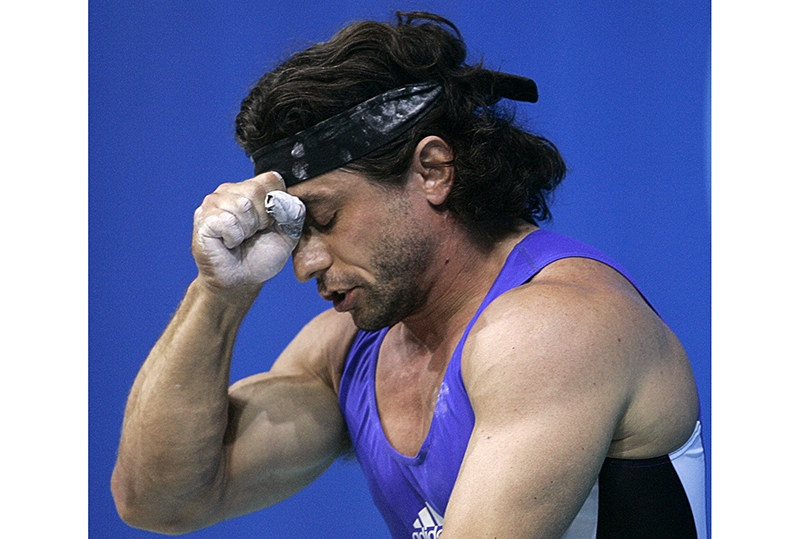There are certain moments during competition that appear to carry great psychological significance, when the momentum starts to shift in one direction or another. These situations require athletes to remain completely focused and calm in the face of difficult circumstances. Tennis players talk of the ‘big’ points during a tight match, such as a fleeting chance to break serve; for an athlete, it could be the final triple-jump in the competition after seriously under-performing; for a footballer, it could be how you react to a perceived bad refereeing decision or to going behind in a match your team are expected to win. Think about times when things have not gone quite to plan and how you reacted. The journey towards peak performance is rarely a perfectly smooth road and we learn from our mistakes – or should do. Do setbacks shake your self-belief and lower your motivation or act as a catalyst for even greater effort?
Most top athletes and coaches believe that psychological factors play as crucial a role as physical attributes and learned skills in the make-up of champions. When physical skills are evenly matched – as they tend to be in competitive sport – the competitor with greater control over his or her mind will usually emerge as the victor. Mental strength is not going to compensate for lack of skill, but in close contests it can make the difference between winning and losing.
A key question for sport and exercise psychologists is whether champions have simply inherited the dominant psychological traits necessary for success or whether mental toughness can be acquired through training and experience. Recent research has attempted to explore the concept of mental toughness in sport more thoroughly, and it appears that, while some people are naturally more tough-minded than others, people can be ‘toughened-up’ with the correct approach to training (2).
What do we mean by mental toughness? It is probably easiest to define in terms of how it affects behaviour and performance. A mentally tough athlete is likely to:
- achieve relatively consistent performances regardless of situational factors;
- retain a confident, positive, optimistic outlook, even when things are not going well, and not ‘choke’ under pressure;
- deal with distractions without letting them interfere with optimal focus;
- tolerate pain and discomfort;
- remain persistent when the ‘going gets tough’;
- have the resilience to bounce back from disappointments.
The influence of personality
These characteristics are obviously related to success in most life situations. But it seems that some of us may be tougher than others because of personality traits and learned ways of coping.Personality research has always stirred up controversy – usually because researchers have not been able to agree on the correct approach to studying it. Some have taken what is known as the ‘trait’ approach, which views personality as stable and enduring, based on individual characteristics. However, others see personality as shaped by environmental influences, while ‘interactionists’ view individual traits and the environment as codeterminants of behaviour. In recent times, this latter position has tended to predominate, based on the view that personality structure involves both a stable core of attitudes, values and beliefs about self, that remains relatively unchanged after early childhood, and more changeable, dynamic behaviours that are influenced by our environment.
Research on the relationship between stress and illness has revealed that some people have characteristics that act as buffers against stressors, making them less likely to succumb to ill health in difficult times. The leading researcher Suzanne Kobasa showed in one study that a personality characteristic known as ‘hardiness’ was a key factor in whether or not highly-stressed executives succumbed to illness. The hardy executives, who avoided illness, tended to perceive stressors as ‘challenges’ rather than threats, so maintaining a sense of control over events (3).
Kobasa suggested that hardiness incorporates three key elements:
- Control – the perceived ability of the individual to exert influence rather than experience helplessness;
- Commitment – ie a refusal to give up easily;
- Challenge – involving a person’s ability to grow and develop rather than remain static, and to view change rather than stability as the norm.
More recently, a team of researchers at Hull University have taken the idea of hardiness a step further by proposing a model of mental toughness in sport(2). A key development has been the development of a questionnaire to assess mental toughness that can be used to assess its influence in experimental studies.
The Hull researchers carried out two studies to show how mental toughness was related to performance and cognitive appraisal. In the first study, 23 volunteers performed 30-minute static cycling trials at three different intensities of 30, 50 and 70% of their maximum oxygen uptake, rating the physical demands of the trials at five-minute intervals.
Participants were classified as having either high or low mental toughness based on their responses to the above-mentioned questionnaire and, as predicted, those with higher levels of mental toughness reported significantly lower perceived exertion at 70% of maximum. No significant differences were noted at lower levels of exertion which, as the researchers acknowledged, is consistent with the cliché that ‘when the going gets tough, the tough get going’. The observed differences at higher levels of exertion could reflect a tendency of the more tough-minded to somehow act on the incoming stimuli before it reaches the level of perception, to reduce the perception of strain. Mentally tough exercisers might perceive themselves as having greater control during such conditions, or interpret the higher intensity as a challenge rather than a threat.
The second study, on 79 participants, considered the influence of mental toughness on resilience in adverse situations. Participants were given either positive or negative feedback after completing a variety of motor tasks, and then asked to perform a planning task which was used as the objective performance measure. The key question for the researchers was how participants would respond to feedback that could alter their confidence. As predicted, mentally tough participants performed better on the planning task, delivering relatively consistent performances whether their feedback had been negative or positive. However, those with lower levels of mental toughness performed significantly worse after negative feedback, confirming the greater resilience of those with high levels of mental toughness.
The ‘4Cs’ model of mental toughness
Building on the work of Kobasa, the Hull team proposed that confidence (as well as control, commitment and challenge) was a key element of mental toughness. This has given rise to the ‘4Cs’ model of mental toughness.Research on mental toughness in sport and exercise has focused largely on individual differences, in which mental toughness is viewed as a relatively stable characteristic. However, classic previous research on animals has suggested that ‘toughening up’ can be achieved through exposure to stressful conditions. Weiss and colleagues observed a toughening phenomenon after exposing animals to cold-water swimming, electric shock treatment or injections over a 14-day period (5). Specifically, the usual decrement in performance following aversive stimulation was not observed after the 14-day period. The intermittent exposure to aversive stimuli had apparently led to the animals becoming more tolerant of – and resilient to – such stimuli.
Although this finding does not necessarily transfer to human subjects, there are distinct parallels with various techniques commonly used as interventions in sport and exercise environments. For example, a technique known as ‘stress inoculation training’ gradually exposes the individual to more threatening situations while self-control is acquired as a means to combat learned helplessness. The stress response is gradually diminished as exposure renders the situation less threatening and the individual experiences a growing sense of control.
Of particular importance here is the idea that exposure to stress in controlled situations is much more powerful than stress reduction or removal, which will not help an individual cope with future exposure to the same stressor.
One researcher has proposed four major influences on toughening, as follows:
- Early life experiences. Both human and animal studies have shown links between exposure to stressors in early life and reduced fear or emotionality when exposed to threats in adulthood;
- Passive toughening. Intermittent exposure seems to protect against depletion of ‘stress hormones’ and is linked with their quicker returns to baseline levels. In other words, people become less sensitive and more tolerant of stress;
- Active toughening. Physical fitness gained through aerobic conditioning is thought to be an important means of self-toughening. This could be related to the application of control;
- Ageing. This has the opposite effects to the other three, tending to make people more sensitive to and less tolerant of stress.
Rod Laver, the Australian tennis legend, has described how he used practice sessions to simulate ‘tough’ match conditions (7). Laver felt that fatigue placed great strain on the concentration which was crucial to success in long matches. To simulate these conditions, Laver forced himself to concentrate and work even harder during the latter stages of training sessions, when he was tired, so that he became used to the mental strain of such conditions. He has cited this as one of the key factors in his long-lasting success.
Simulation training is a great way to prepare mentally for the challenges of competition, and this can include mental as well as physical stressors. For example, a tennis player could increase the mental pressures in a practice match by starting each service game 0-15 down, and thus getting used to ‘rebounding’ after losing the first point. Alternatively a player with an over-reliance on his first serve could be restricted to one serve only and be forced to become extremely focused and accurate with what is, in effect, a second serve.
To enhance the stress still further, players could practise by playing tiebreakers, or play practice matches in front of an audience. The coach might use bad line calls or spectator noise as a way of exposing players intermittently to distractions and giving them practice at dealing with them.
Tennis is a game with plenty of breaks between play that allow time for dwelling on past events or self-doubting. Using imagery and positive self-talk during dead time in order to remain calm and in control can be an effective strategy. Mentally tough competitors are likely to use strategies that reinforce their self-belief at times of crisis. And these strategies can be rehearsed in practice situations.
With a little invention, simulation training can be used for most athletes, and the opportunity to deal with mental stressors in controlled situations can be an invaluable way to toughen up in preparation for the very real challenges of competition.
Author: Lee Crust










